Calathea Zebrina Complete Care And Growing Guide
Attractively exotic, calathea zebrina will add some tropical flair and interest to your houseplant collection.
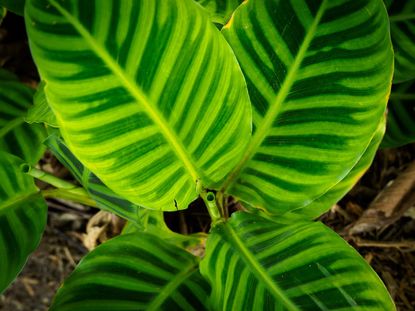

Quick Facts
Botanical name: Geoppertia zebrina, previously known as Calathea zebrina
Height: 3 ft/About 1 m
Spread: 2 ft/ 61 cm
Sun exposure: Part to full shade
Soil requirements: Well-draining, peaty
Hardiness zones: USDA 11-12
When to plant: Year-round
Gardening tips, videos, info and more delivered right to your inbox!
Sign up for the Gardening Know How newsletter today and receive a free download of our most popular eBook "How to Grow Delicious Tomatoes."
Calathea Zebrina: Expert Care And Growing Guide
Named in honor of the German botanist Johann Heinrich Robert Goeppert, Calathea zebra plant is an evergreen perennial in the arrowroot family. Native to Brazil, Calathea zebrina is a common houseplant grown for its lush velvet green leaves outlined with lime green striping and a surprising underside of purple. A beautiful specimen, keep reading to learn how to plant and care for Calathea zebrina.
Calathea Zebrina Care
In nature, zebra plants are found in the shaded forests of Brazil. As houseplants, similar light, water, temperature, humidity, soil and fertilizer conditions must be met.
Light
Zebra plants need bright but indirect sunlight.
Water
This Calathea likes well-draining soil but consistent moisture. Reduce irrigation during the winter months. Allow the top inch or 2 (2.5-5 cm) of soil to dry out before watering then water with slightly warm water until it runs out of the drainage holes of the container.
Temperature & Humidity
Zebra plant thrives in temperatures between 65-75 F (18-24 C) with significant humidity levels of 60-80%. These high humidity levels can be difficult to achieve in the home. Misting the foliage daily and/or placing the plant atop a saucer filled with pebbles can raise humidity levels. Also, placing a humidifier near the plant is helpful.
Soil
Zebra plants like a well-draining good good-quality potting mix that is on the peaty side. You can also make your own soil with 2 parts peat moss to 1 part loam to 2 parts sand or perlite.
Fertilizer
During the growing season, from spring to fall, fertilize zebra plants every two weeks according to the manufacturer’s instructions. Fertilizing zebra plants may help them flower, a rarity when grown indoors.
Problems, Pests & Diseases
Calathea does not like sudden temperature changes or drafts. Keep the plant away from central heat vents, AC, and open doors or windows.
Direct sun will burn foliage. Low humidity will result in curled and brown leaves.
Overly wet soils contribute to root rots.
Zebra plant is susceptible to aphids, mealybugs, scale and spider mites.
How to Plant a Calathea Zebrina
Slow-growing zebra plants can be grown inside as a houseplant, in the greenhouse or outside in USDA zones 11-12. Use a well-draining, fertile potting soil or make your own as above. Select a container that is slightly larger than the root ball of the plant and has adequate drainage holes.
Pruning
Generally, it isn’t necessary to prune zebra plants. You may need to remove any dead or dying leaves or if you are lucky enough to get the plant to bloom, the spent flowers.
Propagation
Calathea can be propagated with stem cuttings from a parent plant. Use a sharp, sterilized knife to take a 2-3 inch (5-8 cm) cutting from the side shoots of the plant. Dust the cut end with rooting hormone. Put the cut end into a container filled with fertile, moist potting soil.
Place the cuttings on a heating mat to maintain a temp of around 70 F. Keep the soil consistently moist. Cover the pot with a clear plastic bag to emulate a greenhouse and raise the humidity or in a terrarium. It can take up to a month for roots to grow. New leaves are an indication of root growth.
Repotting
Zebra plants are slow growers and will take a few years to reach their mature height, so they don’t need repotting very often. If you need to repot the plant, select a slightly larger container and follow the instructions regarding potting calathea above.
Overwintering
Unless you live in USDA zones 11-12, Calathea should be brought indoors when temperatures begin to dip below 65 F (18 C) to overwinter as a houseplant.
Calathea Zebrina Varieties
There are several types of zebra plant including “Dania,” “Fritz Prinsler,” “Leopoldii,” “Louisae,” and “Snow White.”
FREQUENTLY ASKED QUESTIONS
Is a Zebra Plant the Same as a Prayer Plant?
Yes, zebra plant is also referred to as prayer plant; a reference to the plant’s leaves which fold close at night resembling hands in prayer.
Is Calathea Zebrina Toxic to Humans or Pets?
You will be happy to know that Calathea zebrina is non-toxic to humans and their pets.
SEE OUR COMPLETE GUIDE TO HOUSEPLANTS

Jackie Rhoades began writing for Gardening Know How in 2010.
-
 "My Worst Mistake" – Gardeners Share 10 Hard-Learned Lessons
"My Worst Mistake" – Gardeners Share 10 Hard-Learned LessonsGardeners never stop learning, and sometimes our mistakes are the best teachers. But why not save time and heartache by learning from other gardeners' failures?
By Melanie Griffiths
-
 Crops for Urban Growing: 8 Edible Plants For Urban Gardens
Crops for Urban Growing: 8 Edible Plants For Urban GardensUrban edible gardening lets your yard do double duty of beauty and practicality. Have fun combining edible plants with ornamentals.
By Teo Spengler
-
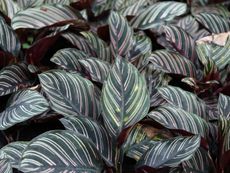 Varieties Of Calathea – Learn About Different Calathea Plants
Varieties Of Calathea – Learn About Different Calathea PlantsThere are many types of Calathea that come in a beautiful array of showy foliage. In fact, there are nearly 300 different cultivars, but only a small number are readily available. Read on to learn about them.
By Raffaele Di Lallo
-
 Winterizing Calatheas: Tips For Calathea Care In Winter
Winterizing Calatheas: Tips For Calathea Care In WinterCalatheas are tropical plants and commonly grown indoors. Click here to learn about winterizing calatheas and their care in winter.
By Mary H. Dyer
-
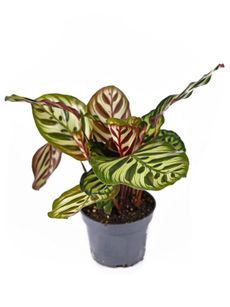 Calathea Propagation Methods: How To Propagate Calathea Plants
Calathea Propagation Methods: How To Propagate Calathea PlantsGrown for its attractive foliage, the calathea is a favorite houseplant. Click here for info on the propagation of calathea plants.
By Becca Badgett
-
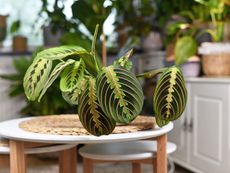 Calathea Vs. Maranta – Are Calathea And Maranta The Same
Calathea Vs. Maranta – Are Calathea And Maranta The SameAre Calathea and Maranta the same? They're closely related and often confused with one another, but are in different genera. Learn more here.
By Bonnie L. Grant
-
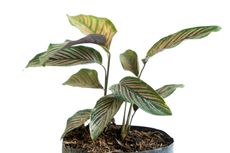 Indoor Pinstripe Plant Info: Growing A Pinstripe Houseplant
Indoor Pinstripe Plant Info: Growing A Pinstripe HouseplantCalathea ornata, or the pinstripe houseplant, is a striking plant with beautifully veined leaves that can make a striking statement in your home. Like any Calathea, houseplant care can be tricky and extra effort is needed for them to look their best indoors. Learn more here.
By Raffaele Di Lallo
-
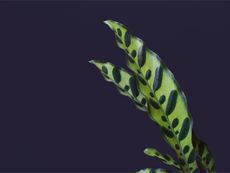 Rattlesnake Plant Care: How To Grow Rattlesnake Houseplants
Rattlesnake Plant Care: How To Grow Rattlesnake HouseplantsThe rattlesnake plant is a decorative perennial with strappy, spotted leaves and deep purple undersides. Click to learn more.
By Mary H. Dyer
-
 Calathea Care In Gardens: Tips For Growing Calathea Plants Outside
Calathea Care In Gardens: Tips For Growing Calathea Plants OutsideWill Calathea grow outdoors? It depends on your climate because Calathea is a tropical plant. If you?re fortunate to live in a warm, humid climate in USDA plant hardiness zone 8 or above, you can certainly try growing calathea plants in your garden. Click here for more info.
By Mary H. Dyer
-
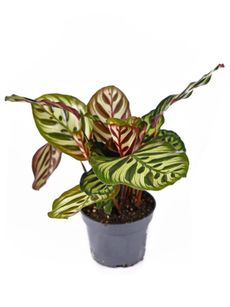 About The Calathea Peacock Plant: Information On How To Grow A Peacock Plant
About The Calathea Peacock Plant: Information On How To Grow A Peacock PlantPeacock houseplants are often found as part of indoor collections. Taking care of Calathea peacock and creating conditions in which it will flourish is not difficult when following the simple tips in this article.
By Becca Badgett